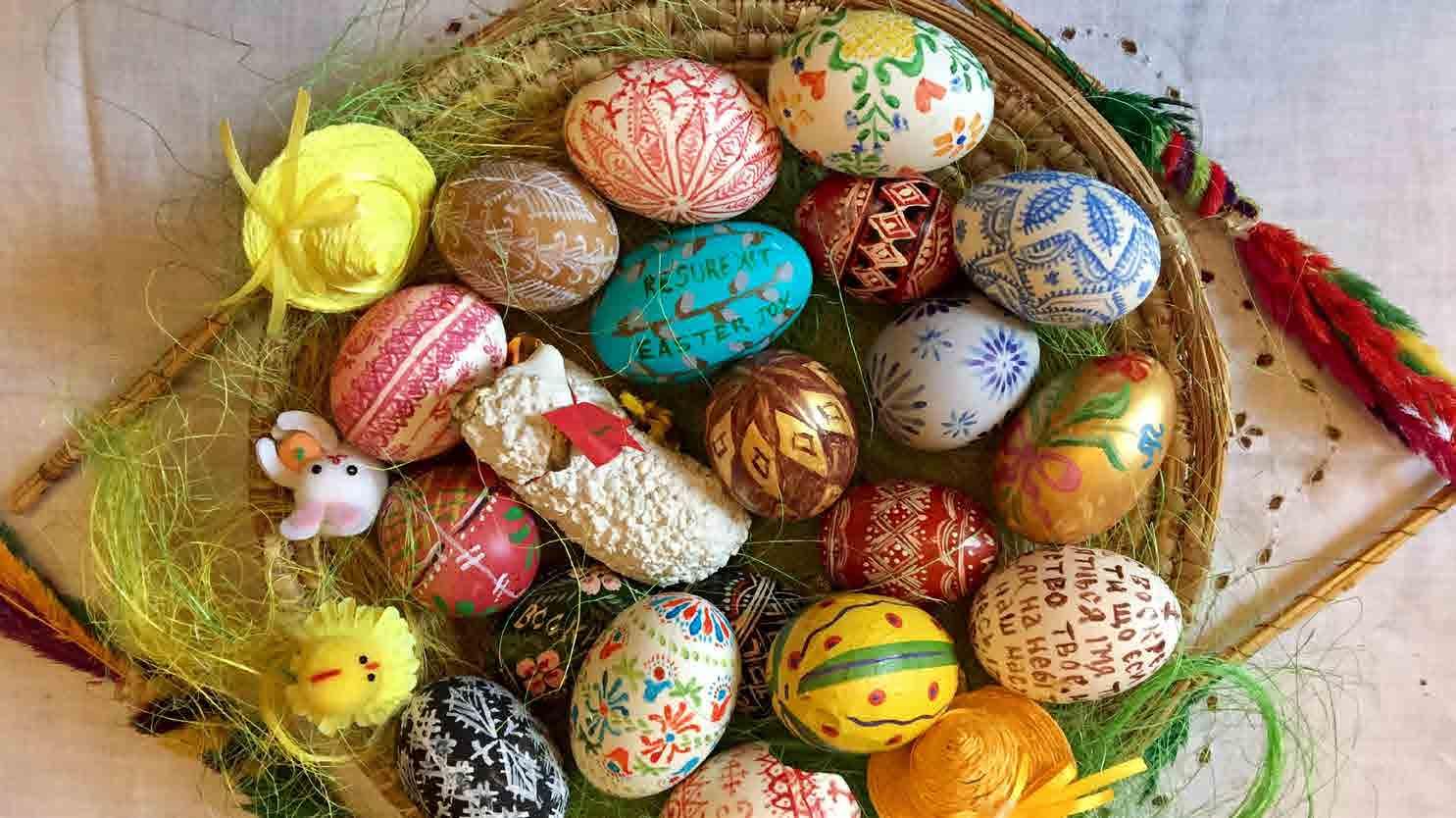
4 minute read
Pisanki: Polish Easter Eggs
By a priest of the Birmingham Oratory
Scarcely does the New Year begin than our supermarkets stock chocolate Easter Eggs. In fact, this piece of confectionary echoes a richer and more venerable custom. As Easter draws closer many households in Central and Eastern Europe carry out the ancient tradition of decorating real chicken or duck eggs for Easter. The practice is found in German and Balkan regions, as well as pan-Slavic areas, and the Tsars were known to present costly jewelled and enamelled eggs to friends and family. But the custom reached the highest art form in Poland and the western Ukraine.
Called ‘pisanki’, from the Polish ‘pisac’ (to write), this folk art is executed by various techniques. Perhaps the most ancient is to hard-boil the eggs using natural vegetable dyes – orange or yellow from onion skins, red from red onion skins or beetroot, green from spinach or various kinds of moss. The artist then carefully scratches designs with a sharp point, revealing the original white of the shell below. An alternative is to use a brush to ‘write’ designs of a darker shade on a more lightly coloured egg. Geometrical compositions or repeated floral motifs are popular; lines intersected by diagonal strokes and the words, ‘Christ is risen, Alleluia’ and sprigs of Pussy Willow – used on Palm Sunday in parts of Poland – are also popular, as are zigzag designs which represent wolves’ teeth, to protect from evil!
The more skilled artist may attempt to paint birds. Sometimes the eggs are ‘blown’ by pricking a hole at each end and expelling the contents by blowing. Some decorate their eggs with intricate patterns of wool glued on, or even white eggs with red spots to represent the blood of Christ; this is a frequent practice in Lithuania. Red has always been the most popular and auspicious colour, and red eggs are sometimes called ‘kraszanki’. ‘Krasno’ is the Old Slavic word for red, and of course calls to mind the Precious Blood.
But the most stunning results are obtained by a batik technique using melted wax and several dyes. By means of a tiny metal funnel, the pattern – in a light shade or white – is drawn on the egg with melted wax. The egg is then dipped in the palest dye, which of course will not stick to the eggshell where it is covered in wax. More patterns are drawn in wax, and the egg dipped in the next, darker, dye. The process may be continued, depending on how many colours the artist wishes to include. Finally, the wax is scraped or melted off to reveal the intricate multi-coloured designs beneath.
If blown, these beautiful eggs can be kept for many years. Decorated eggs, and sometimes wooden ones, are also made professionally, and sold in folk art shops.
The ritual use of eggs stretches back to the pagan past. To our ancestors, mother nature would be kind and produce flowers, fruit, and vegetables in warmer seasons; but she could be equally harsh and destructive, bringing snow, storms, and floods. The fertile egg, bringing forth new life in the spring, was a source of wonder and magic. Farmers would place an egg in their fields at sowing time, to encourage fertility. Eggs were given as courtship gifts, and left as votive offerings on the graves of the dead. With the introduction of Christianity, the symbolism of the egg took on a new meaning. The chick breaking forth from the egg called to mind the Resurrection of Christ from the tomb at Easter, so the custom of pisanki became even more popular among the Slavs.
With the dawning of Easter all the forbidden foods of Lent can be once again enjoyed with great enthusiasm. A dyed, hardboiled egg is cut into pieces and shared by all the family members at the table as a sign of good-will. A lamb made from icing sugar or a lamb-shaped cake stands in the centre of the table, reminding us of Christ, the Pascal Lamb.
But before any of these things can be enjoyed, they require the blessing of the priest. On Holy Saturday morning crowds make their way to church, each person holding a decorated basket containing a sample of all the good things to be eaten at Easter breakfast: some salami, bread and cake, salt, horseradish sauce, and coloured pisanki cheerfully nestling among it all. The customary blessing, and even the blessed goods themselves, are called ‘święconki’; a word meaning ‘little blessed things’!
Priests bless the food and sprinkle holy water. Many people present the priest with an item from their basket; he has been too busy with Holy Week ceremonies to prepare swieconki himself.
Only after the first morning Easter Mass, the ‘Resureksja’, when the Blessed Sacrament is carried in procession three times around the church, can the Easter breakfast begin. The pisanki remain proudly on display and then are carefully stored away until the next Easter.










